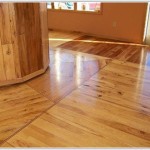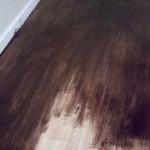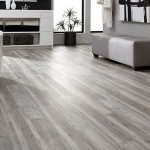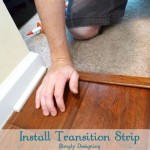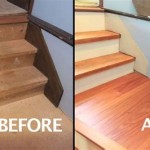Discontinued Armstrong Swiftlock Laminate Flooring: Understanding Its Legacy and Alternatives
Armstrong Swiftlock laminate flooring, once a popular choice for homeowners seeking a durable and aesthetically pleasing flooring solution, is no longer in production. Understanding the reasons for its discontinuation, the challenges this presents to existing owners, and the alternative flooring options available are crucial for effectively addressing flooring needs in situations where Swiftlock is either damaged or desired for consistency across a larger space.
The Swiftlock system was initially lauded for its ease of installation, a feature that appealed to both DIY enthusiasts and professional installers. The interlocking mechanism allowed for a "floating floor" application, meaning the floor panels were not glued or nailed to the subfloor, simplifying the process and potentially reducing installation costs.
Knowing the characteristics that made Armstrong Swiftlock laminate flooring desirable can help guide the search for a suitable replacement or alternative. Durability, ease of maintenance, and appearance were key selling points. Identifying the specific reasons why homeowners chose Swiftlock in the first place helps clarify the desired qualities in a new flooring product.
Reasons for Discontinuation and Implications
The discontinuation of product lines is a common occurrence in the flooring industry. Several factors can contribute to this decision, including shifts in market demand, changes in manufacturing processes, cost considerations, and the introduction of newer, more advanced products. In the case of Armstrong Swiftlock, the specific reasons for its discontinuation are complex and may involve a combination of these factors.
One likely explanation is the evolution of laminate flooring technology. Over time, manufacturers have developed improved locking systems, enhanced durability, and more realistic visual representations of natural materials. Newer laminate flooring products may offer superior performance and aesthetics compared to older lines like Swiftlock. These advancements can make older products less competitive in the market.
Another potential reason is cost. Manufacturing costs can fluctuate, and older product lines may become less profitable to produce compared to newer, more efficient lines. Furthermore, the demand for specific styles and colors within a product line can decline, leading to excess inventory and ultimately contributing to a discontinuation decision.
The discontinuation of Armstrong Swiftlock presents several challenges for homeowners who currently have this flooring installed. Damage to existing floors, such as scratches, water damage, or broken planks, can be difficult to repair if matching replacement planks are unavailable. Replacing an entire floor can be expensive and disruptive, particularly if only a small section is damaged. Furthermore, homeowners who are planning renovations or additions may struggle to maintain a consistent flooring appearance throughout their homes if they cannot source additional Swiftlock planks.
Finding Replacement Planks and Compatibility Issues
When dealing with discontinued flooring, finding replacement planks often requires resourceful searching. Several avenues can be explored, though success is not guaranteed. Checking with local flooring retailers who may have remaining stock is a good starting point. These retailers may have surplus planks from previous installations or returns.
Online marketplaces, such as eBay, Craigslist, and specialized flooring forums, can also be valuable resources. These platforms often feature individuals or businesses selling leftover or salvaged flooring materials. However, caution is advised when purchasing from online sources. It is essential to carefully inspect the planks for damage and to verify that they are indeed the correct color, style, and locking mechanism before making a purchase.
Another possibility is to contact Armstrong directly or consult with flooring specialists who may have access to discontinued flooring inventories or know of alternative sources. While Armstrong no longer manufactures Swiftlock, they may be able to provide information about compatible alternatives or direct you to suppliers who may have remaining stock.
A crucial consideration when attempting to source replacement planks is compatibility. Even if a plank appears similar to the existing Swiftlock flooring, there is no guarantee that the locking mechanism will be compatible. Subtle variations in the locking system can prevent planks from interlocking properly, resulting in gaps, uneven surfaces, and ultimately, a compromised floor. It is therefore crucial to carefully examine the locking mechanism of any potential replacement planks and compare it to the existing flooring before attempting installation.
In some cases, it may be possible to salvage planks from less visible areas of the floor, such as under furniture or in closets, to repair more prominent areas. This approach can provide a temporary solution, but it may not be a long-term fix, especially if the damage is extensive.
Alternative Flooring Options and Considerations
When replacement planks are unavailable or impractical to source, homeowners must consider alternative flooring options. Several factors should be taken into account when selecting a replacement flooring material, including budget, desired aesthetics, durability, maintenance requirements, and compatibility with the existing subfloor.
Laminate flooring remains a popular choice due to its affordability, durability, and wide range of styles and colors. Modern laminate flooring products offer improved scratch resistance, water resistance, and realistic visual representations of natural materials such as wood and stone. When choosing a new laminate floor, it is important to select a product that closely matches the existing flooring in terms of color, style, and texture.
Luxury Vinyl Plank (LVP) is another excellent alternative. LVP offers similar benefits to laminate flooring, including durability, water resistance, and ease of installation. However, LVP is typically more resistant to water damage than laminate flooring, making it a suitable choice for bathrooms, kitchens, and other areas prone to moisture. LVP also comes in a wide variety of styles and colors, including realistic wood and stone looks.
Hardwood flooring is a classic and timeless option that adds elegance and value to any home. While hardwood flooring is more expensive than laminate or LVP, it offers superior durability and can be refinished multiple times, extending its lifespan. Hardwood flooring is available in a variety of wood species, colors, and finishes, allowing homeowners to create a customized look.
Engineered hardwood flooring is a more affordable alternative to solid hardwood. Engineered hardwood consists of a thin layer of hardwood veneer bonded to a core of plywood or other composite material. Engineered hardwood offers similar aesthetics to solid hardwood but is more resistant to moisture and less prone to warping or cupping.
Tile flooring, including ceramic, porcelain, and natural stone tiles, is a durable and water-resistant option that is ideal for bathrooms, kitchens, and entryways. Tile flooring is available in a vast array of colors, styles, and sizes, allowing for a wide range of design possibilities. However, tile flooring can be cold and hard underfoot, and installation can be more labor-intensive than other flooring options.
When selecting a replacement flooring material, it is crucial to consider the transition between the new flooring and the existing Swiftlock flooring. A smooth and seamless transition is essential for both aesthetic and safety reasons. Transition strips or threshold moldings can be used to bridge the gap between different flooring materials and to create a safe and visually appealing transition.
Finally, it's important to consult with a qualified flooring professional to assess the existing subfloor and to ensure that the chosen replacement flooring material is compatible with the subfloor. Proper subfloor preparation is essential for ensuring the longevity and performance of the new flooring.

Style Selections Swiftlock Plus Cherry Wood Plank Laminate Flooring 11 05 Sq Ft At Com

Armstrong Laminate Flooring Review What Happened Floorings

Swiftlock Plus By Shaw Review From

Discontinued Armstrong Flooring S

Armstrong Laminate Flooring For

Armstrong Laminate Flooring For

Armstrong Laminate Flooring For

Armstrong Laminate Flooring For

Vinyl Sheet

Armstrong Laminate Flooring Catalogs Documentation Brochures
Related Posts


